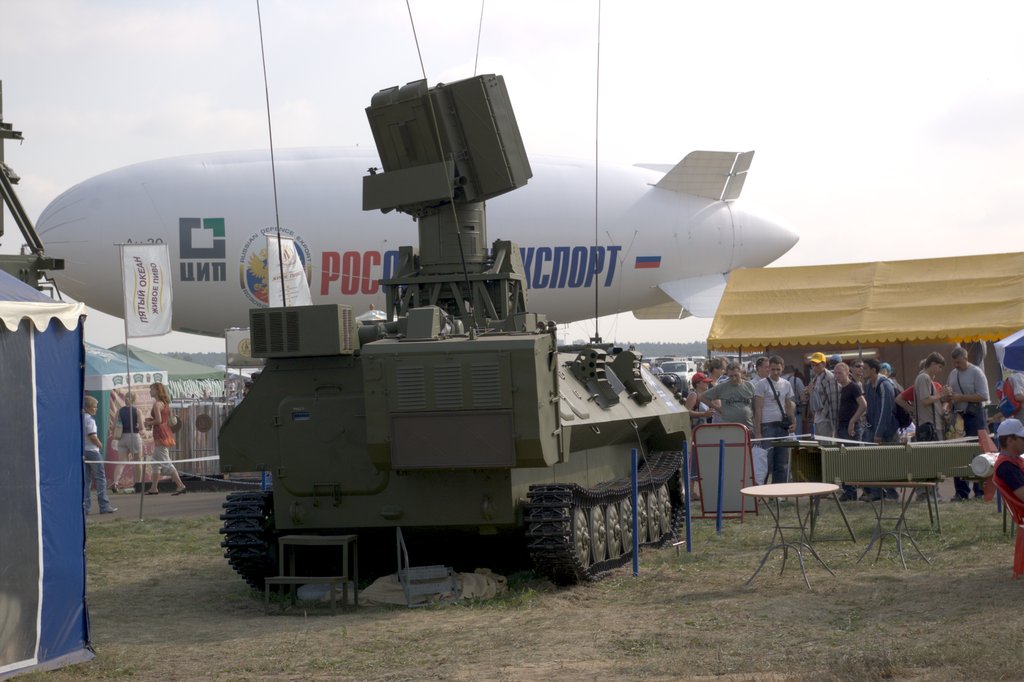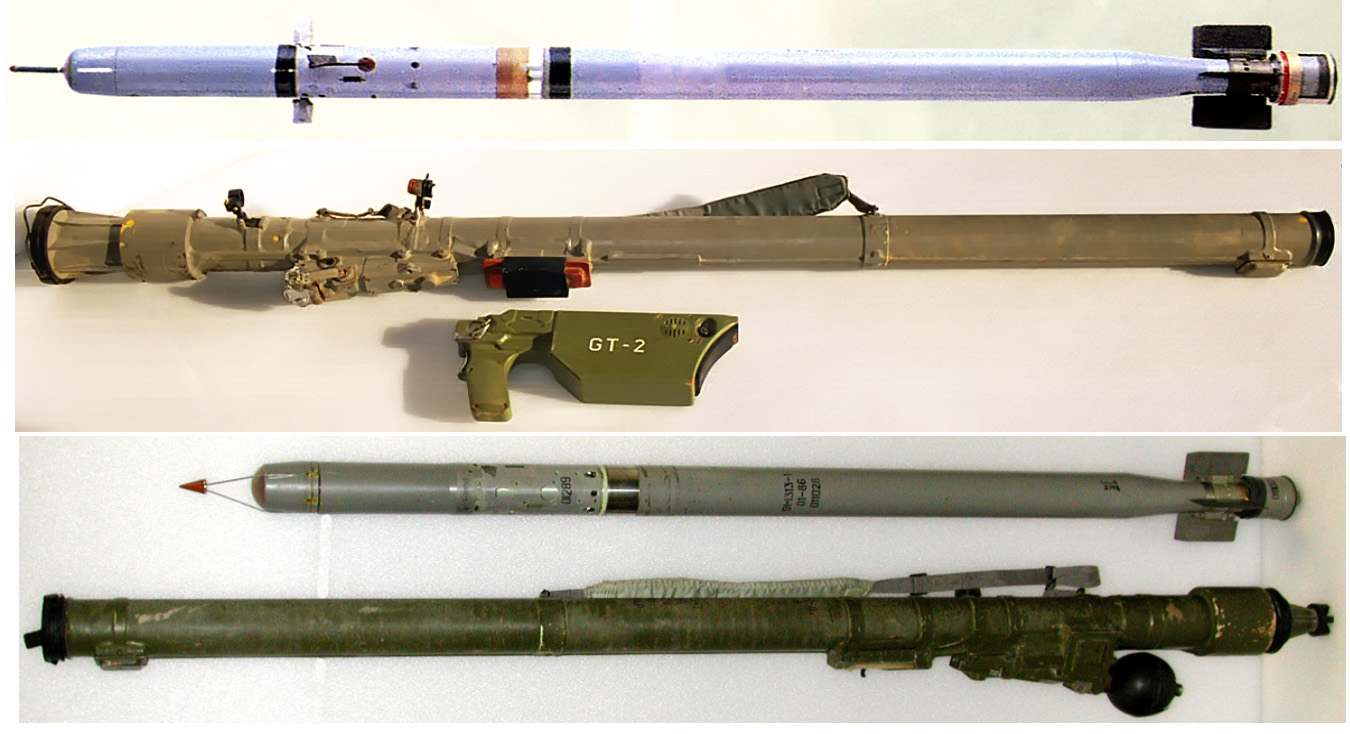|
PPRU-1
PPRU-1 "Ovod-M-SV" (russian: ППРУ-1 «Овод-М-СВ», GRAU designation - 9S80, NATO reporting name - Dog Ear, en, Ovod) is a Soviet/Russian mobile reconnaissance and command center for tactical air defence systems. Description PPRU-M1 and PPRU-M1-2 could link up to 3 air defense missile or artillery batteries. It integrates under unified command and control up to 4 vehicles of Tor-M1 (Tor-M2E) or Osa-AKM missile systems, up to 6 vehicles of Tunguska-М1, Strela-10M2 (Strela-10M3) or ZSU-23-4M4 or ZSU-23-4M5, up to 6 guns of ZU-23/-30M1-4, up to 6 sections of Igla and Strela MANPADs and 1 battery of 57-mm S-60 (6–8 anti-aircraft guns). Modifications * 9S80-1 Sborka (PPRU-1M) * 9S80M Sborka-M * 9S80M1 Sborka-M1 (PPRU-M1) * 9S80M1-2 Sborka-M1-2 (PPRU-M1-2) See also * Ranzhir External links PPRU-M1 (PPRU-M1-2)at Almaz-Antey JSC Concern VKO "Almaz-Antey" (russian: link=no, ОАО "Концерн ВКО "Алмаз-Антей"») is a Russian state-owned ... [...More Info...] [...Related Items...] OR: [Wikipedia] [Google] [Baidu] |
PPRU-1
PPRU-1 "Ovod-M-SV" (russian: ППРУ-1 «Овод-М-СВ», GRAU designation - 9S80, NATO reporting name - Dog Ear, en, Ovod) is a Soviet/Russian mobile reconnaissance and command center for tactical air defence systems. Description PPRU-M1 and PPRU-M1-2 could link up to 3 air defense missile or artillery batteries. It integrates under unified command and control up to 4 vehicles of Tor-M1 (Tor-M2E) or Osa-AKM missile systems, up to 6 vehicles of Tunguska-М1, Strela-10M2 (Strela-10M3) or ZSU-23-4M4 or ZSU-23-4M5, up to 6 guns of ZU-23/-30M1-4, up to 6 sections of Igla and Strela MANPADs and 1 battery of 57-mm S-60 (6–8 anti-aircraft guns). Modifications * 9S80-1 Sborka (PPRU-1M) * 9S80M Sborka-M * 9S80M1 Sborka-M1 (PPRU-M1) * 9S80M1-2 Sborka-M1-2 (PPRU-M1-2) See also * Ranzhir External links PPRU-M1 (PPRU-M1-2)at Almaz-Antey JSC Concern VKO "Almaz-Antey" (russian: link=no, ОАО "Концерн ВКО "Алмаз-Антей"») is a Russian state-owned ... [...More Info...] [...Related Items...] OR: [Wikipedia] [Google] [Baidu] |
ZSU-23-4
The ZSU-23-4 "Shilka" is a lightly armored Soviet self-propelled, radar-guided anti-aircraft weapon system (SPAAG). Etymology The acronym "ZSU" stands for ''Zenitnaya Samokhodnaya Ustanovka'' (russian: Зенитная Самоходная Установка), meaning "anti-aircraft self-propelled system"; the "23" signifies the bore diameter in millimeters; the "4" signifies the number of gun barrels. It is named after the Shilka River in Russia. Afghan soldiers nicknamed it the "sewing machine" due to the sound of firing guns. It is also referred to by its nickname of "Zeus", derived from the Russian acronym. History The previous Soviet self-propelled anti-aircraft gun (SPAAG), the ZSU-57-2, was armed with two 57 mm autocannons; it was aimed optically using a basic tracking and lead calculating system. The ZSU-57-2 was not particularly successful despite its very powerful autocannons; given their large caliber, it could only carry 300 rounds, was inaccurate as it lacked r ... [...More Info...] [...Related Items...] OR: [Wikipedia] [Google] [Baidu] |
Ranzhir
Ranzhir (russian: Ранжир, GRAU designation 9S737 (russian: 9С737); en, ranking) is a Soviet/Russian mobile command center for several types of Russian anti-aircraft weapons, such as Tor, Tunguska, Strela-10, Igla and Osa. It is used for a mixed grouping of air defense forces. Development 9S737 vehicle was designed by Belarusian scientific and research institute of automatization technologies (NIISA), currently "AGAT–Control Systems". A. V. Shershnev was appointed chief designer of 9S737 vehicle. State trials of the system were held from August 1987 till June 1988 at Embi testing range (nowadays at Kazakhstan). In 1989 it was approved for military. Mass production was started at Minsk NPO Agat, but later transferred to Radiozavod (Penza) Modifications * 9S737М Ranzhir-M (russian: Ранжир-М) See also * PPRU-1 PPRU-1 "Ovod-M-SV" (russian: ППРУ-1 «Овод-М-СВ», GRAU designation - 9S80, NATO reporting name - Dog Ear, en, Ovod) is a Soviet/ ... [...More Info...] [...Related Items...] OR: [Wikipedia] [Google] [Baidu] |
9K38 Igla
The 9K38 Igla (russian: Игла́, "needle", NATO reporting name SA-18 Grouse) is a Russian/Soviet man-portable infrared homing surface-to-air missile (SAM) system. A simplified, earlier version is known as the 9K310 Igla-1 (NATO: SA-16 Gimlet), and the latest variant is the 9K338 Igla-S (SA-24 Grinch). The Igla-1 entered service in 1981, the Igla in 1983, and the Igla-S in 2004. The Igla has been supplemented by the 9K333 Verba since 2014.New Russian Verba MANPADS will replace Igla-S - Armyrecognition.com, 15 September 2014 History The development of the Igla short-range man-portable air defense system ( MA ...[...More Info...] [...Related Items...] OR: [Wikipedia] [Google] [Baidu] |
Self-propelled Anti-aircraft Weapons Of The Soviet Union , a model for studying the motion of swarms
{{Disambiguation ...
Self-propelled may refer to * Human-powered transport, humans moving themselves (and their cargo) via their own muscle energy * Machines that power their own movement: ** Automobile (from ''auto-'' + ''mobile'', "self-moving") ** Locomotive (from ''loco-'' + ''motive'', "moving from its current place") ** Multiple units, self-propelled train carriages ** Self-propelled artillery *** Self-propelled gun *** Self-propelled anti-aircraft weapon *** Tank destroyer, a self-propelled anti-tank gun *** Mortar carrier, a self-propelled mortar ** Self-propelled modular transporter ** Leonardo's self-propelled cart ** Self-propelled barge T-36 * Self-propelled particles Self-propelled particles (SPP), also referred to as self-driven particles, are terms used by physicists to describe autonomous agents, which convert energy from the environment into directed or persistent motion. Natural systems which have insp ... [...More Info...] [...Related Items...] OR: [Wikipedia] [Google] [Baidu] |
Self-propelled Anti-aircraft Weapons , a model for studying the motion of swarms
{{Disambiguation ...
Self-propelled may refer to * Human-powered transport, humans moving themselves (and their cargo) via their own muscle energy * Machines that power their own movement: ** Automobile (from ''auto-'' + ''mobile'', "self-moving") ** Locomotive (from ''loco-'' + ''motive'', "moving from its current place") ** Multiple units, self-propelled train carriages ** Self-propelled artillery *** Self-propelled gun *** Self-propelled anti-aircraft weapon *** Tank destroyer, a self-propelled anti-tank gun *** Mortar carrier, a self-propelled mortar ** Self-propelled modular transporter ** Leonardo's self-propelled cart ** Self-propelled barge T-36 * Self-propelled particles Self-propelled particles (SPP), also referred to as self-driven particles, are terms used by physicists to describe autonomous agents, which convert energy from the environment into directed or persistent motion. Natural systems which have insp ... [...More Info...] [...Related Items...] OR: [Wikipedia] [Google] [Baidu] |
Almaz-Antey
JSC Concern VKO "Almaz-Antey" (russian: link=no, ОАО "Концерн ВКО "Алмаз-Антей"») is a Russian state-owned company in the arms industry, a result of a merger of Antey Corporation and NPO Almaz, unifying some of the national military enterprises, in particular, the developers of anti-aircraft defence systems. The organisation is headquartered in Moscow and is the world's eighth-largest defence contractor measured by 2017 defence revenues. In 2017, Almaz-Antey had arms sales of $9.125 billion. The Almaz-Antey group produce air defense systems, firearms for aircraft and armored vehicles, artillery shells and surface-to-surface missiles, airspace surveillance and coordination and artillery radars. The Group also manufacture civilian products such as navigation systems, air traffic systems, civil airtraffic- and weather radars, sewage cleaning systems, ventilation valves for nuclear power plants, and plastic packaging for cosmetics and food products ... [...More Info...] [...Related Items...] OR: [Wikipedia] [Google] [Baidu] |
57 Mm AZP S-60
AZP S-60 (russian: Автоматическая зенитная пушка С-60, abbrev. АЗП (AZP); literally: ''Automatic anti-aircraft gun S-60'') is a Soviet towed, road-transportable, short- to medium-range, single-barrel anti-aircraft gun from the 1950s. The gun was extensively used in Warsaw Pact, Middle Eastern and South-East Asian countries. History In the late 1940s, the Soviets started to develop a 57 mm anti-aircraft gun, to replace its 37 mm guns. Three models were presented, and the winning design was made by V. G. Grabin. According to western intelligence sources, the German prototype gun ''5,5 cm Gerät 58'' formed the basis for the design. The Soviets were also able to study German ''5 cm Flak 41'' guns that had been captured following the Battle of Stalingrad. The prototype passed the field tests in 1946 and was accepted into service in 1950, after some minor modifications. The anti-aircraft gun was given the name ''57 mm AZP S-60''. Grabin cont ... [...More Info...] [...Related Items...] OR: [Wikipedia] [Google] [Baidu] |
MANPAD
Man-portable air-defense systems (MANPADS or MPADS) are portable surface-to-air missiles. They are guided weapons and are a threat to low-flying aircraft, especially helicopters. Overview MANPADS were developed in the 1950s to provide military ground forces with protection from jet aircraft. They have received a great deal of attention, partly because armed groups have used them against commercial airliners. These missiles, affordable and widely available through a variety of sources, have been used successfully over the past three decades both in military conflicts, as well as by terrorist organizations. Twenty-five countries, including the United Kingdom, the United States, Poland, Sweden, Russia, and Turkey, produce man-portable air defense systems.CRS RL31741 page 1 Possession, export, and trafficking of such weapons is officially tightly controlled, due to the threat they pose to civil aviation, although such efforts have not always been successful. The missiles are about ... [...More Info...] [...Related Items...] OR: [Wikipedia] [Google] [Baidu] |
9K34 Strela-3
The 9K34 Strela-3 (russian: 9К34 «Стрела-3», 'arrow', NATO reporting name: SA-14 Gremlin) is a man-portable air defense missile system (MANPADS) developed in the Soviet Union as a response to the poor performance of the earlier 9K32 Strela-2 (SA-7 Grail) system. The missile was largely based on the earlier Strela 2, and thus development proceeded rapidly. The new weapon was accepted into service in the Soviet Army in January 1974. Description The most significant change over the Strela 2 was the introduction of an all-new infra-red homing seeker head. The new seeker worked on FM modulation (con-scan) principle, which is less vulnerable to jamming and decoy flares than the earlier AM (spin-scan) seekers, which were easily fooled by flares and even the most primitive infrared jammers. The new seeker also introduced detector element cooling in the form of a pressurized nitrogen bottle attached to the launcher. The effect of cooling was to expand the seeker's lead sulphi ... [...More Info...] [...Related Items...] OR: [Wikipedia] [Google] [Baidu] |
ZU-23
The ZU-23-2, also known as ZU-23, is a Soviet towed 23×152mm anti-aircraft twin-barreled autocannon. ZU stands for ''Zenitnaya Ustanovka'' (Russian: Зенитная Установка) – anti-aircraft mount. The GRAU index is 2A13. Development history The ZU-23-2 was developed in the late 1950s. It was designed to engage low-flying targets at a range of 2.5 km as well as armoured vehicles at a range of two kilometres and for direct defence of troops and strategic locations against air assault usually conducted by helicopters and low-flying airplanes. In 1955, KBP presented the single-barrel ZU-1 and the twin-barrel ZU-14. While the former was eventually dropped, the ZU-14 was selected and, after some modifications, entered series production. In the Soviet Union, some 140,000 units were produced. The ZU-23 has also been produced under licence by Bulgaria, Poland, Egypt and the People's Republic of China. Development of this weapon into a self-propelled anti-aircraft gu ... [...More Info...] [...Related Items...] OR: [Wikipedia] [Google] [Baidu] |



_(521-41).jpg)




